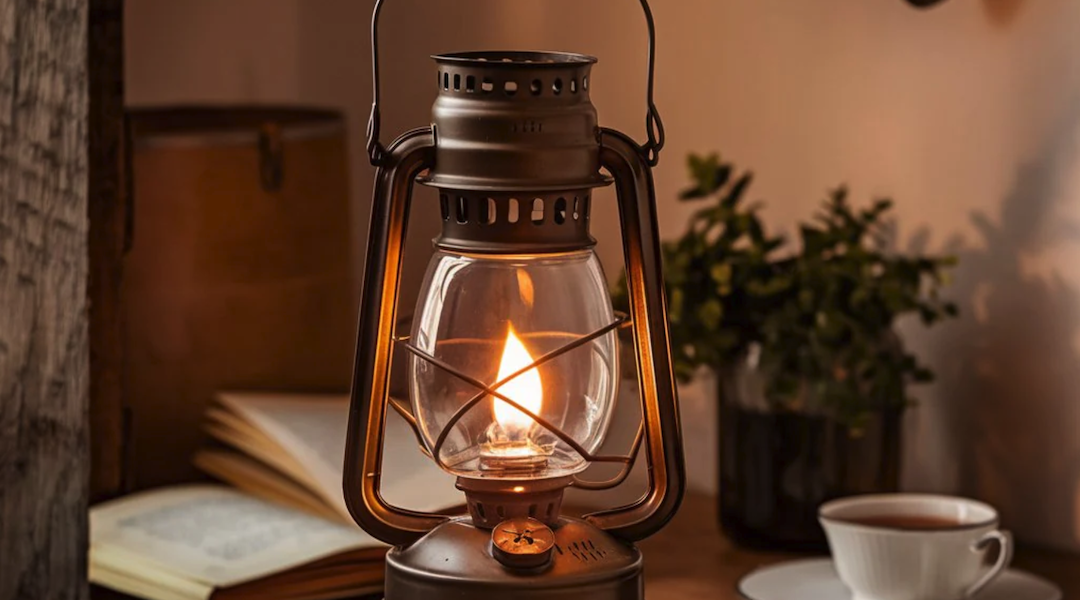Gas lanterns have a rich and storied history that dates back to the early 19th century, when they first emerged as a practical solution for illuminating streets and public spaces. The advent of gas lighting was a significant technological advancement, as it provided a brighter and more reliable source of light compared to the oil lamps that had dominated prior to this innovation. The first gas streetlights were installed in London in 1807, marking the beginning of a new era in urban illumination.
These early gas lanterns were often ornate, featuring intricate designs that reflected the architectural styles of the time, and they quickly became a symbol of progress and modernity. As cities expanded and the demand for effective lighting grew, gas lanterns became ubiquitous in urban environments. By the mid-19th century, gas lighting had spread across Europe and North America, illuminating not only streets but also homes, theaters, and public buildings.
The design of gas lanterns evolved during this period, with manufacturers experimenting with various materials and styles. The introduction of the mantle in the late 19th century significantly improved the efficiency and brightness of gas lamps Woolerdesign, making them even more popular. However, with the rise of electric lighting in the early 20th century, gas lanterns began to decline in use.
Despite this shift, their historical significance and aesthetic appeal have ensured that they remain a cherished fixture in outdoor design.
The Appeal of Vintage Charm: Why Gas Lanterns Are Making a Comeback in Outdoor Design
In recent years, there has been a notable resurgence in the popularity of gas lanterns, driven by a growing appreciation for vintage charm and nostalgia in outdoor design. Homeowners and designers alike are increasingly drawn to the unique character that gas lanterns bring to outdoor spaces. Unlike their electric counterparts, gas lanterns exude a warm, flickering glow that creates an inviting atmosphere, reminiscent of simpler times.
This nostalgic quality resonates with many who seek to create a cozy and welcoming environment in their gardens or patios. Moreover, gas lanterns offer versatility in design, seamlessly complementing various architectural styles—from traditional to modern. Their ability to evoke a sense of history while still fitting into contemporary aesthetics makes them an appealing choice for many homeowners.
Whether used as standalone fixtures or incorporated into larger lighting schemes, gas lanterns can enhance the overall ambiance of an outdoor space. This blend of vintage charm and modern sensibility is a key factor driving their resurgence, as people look for ways to infuse their outdoor areas with personality and warmth.
Choosing the Right Style: How to Select the Perfect Gas Lantern for Your Outdoor Space
Selecting the right gas lantern for your outdoor space involves considering several factors, including style, size, and functionality. The first step is to assess the overall aesthetic of your home and garden. Gas lanterns come in a variety of designs, from classic Victorian styles with ornate detailing to sleek, minimalist models that suit contemporary settings.
For instance, if you have a traditional home with intricate architectural features, a lantern with decorative scrollwork and antique finishes may be the perfect fit. Conversely, if your home boasts a modern design, you might opt for a streamlined lantern with clean lines and a polished surface. Size is another crucial consideration when choosing gas lanterns.
A lantern that is too small may get lost in a spacious outdoor area, while one that is too large can overwhelm a more intimate setting. It’s essential to strike a balance between scale and proportion. Additionally, consider the placement of your gas lanterns—whether they will be mounted on walls, hung from ceilings, or placed on tables—as this will influence your choice of style and size.
Functionality also plays a role; some gas lanterns are designed for ambient lighting, while others provide more focused illumination for tasks such as cooking or reading outdoors.
Installation and Maintenance: Tips for Properly Installing and Caring for Your Gas Lantern
Proper installation and maintenance are vital to ensuring that your gas lanterns function safely and effectively. When installing gas lanterns, it is crucial to follow local building codes and regulations regarding gas lines and ventilation. Hiring a professional installer who is experienced with gas fixtures can help ensure that everything is set up correctly.
They will be able to assess your outdoor space and determine the best locations for your lanterns while ensuring that all safety measures are adhered to. Once installed, regular maintenance is essential to keep your gas lanterns in optimal condition. This includes checking for leaks in the gas lines, which can pose serious safety risks.
A simple soap solution can be applied to connections; if bubbles form, there is a leak that needs addressing. Additionally, cleaning the glass components regularly will help maintain clarity and brightness. Over time, soot can accumulate on the glass surfaces due to incomplete combustion; using a soft cloth and appropriate cleaning solution will help restore their shine.
It’s also advisable to inspect the mantles periodically for wear and replace them as needed to ensure consistent performance.
Creating Ambiance: How Gas Lanterns Add Warmth and Character to Outdoor Spaces
Gas lanterns are unparalleled in their ability to create ambiance in outdoor settings. The soft glow emitted by these fixtures casts gentle shadows and highlights architectural features in ways that harsher electric lights cannot replicate. This warm light fosters an inviting atmosphere that encourages relaxation and socialization among family and friends.
Whether illuminating a cozy patio gathering or enhancing the tranquility of a garden retreat, gas lanterns contribute significantly to the overall mood of an outdoor space. In addition to their functional role as light sources, gas lanterns serve as decorative elements that enhance the character of outdoor areas. Their unique designs can act as focal points or subtle accents within landscaping schemes.
For example, strategically placing lanterns along pathways can guide guests while adding visual interest to the surroundings. Furthermore, when combined with other outdoor elements such as fire pits or water features, gas lanterns can create cohesive environments that invite exploration and enjoyment.
Safety Considerations: Understanding the Potential Risks and Precautions of Using Gas Lanterns
While gas lanterns offer numerous benefits, it is essential to understand the potential risks associated with their use. One primary concern is the risk of gas leaks, which can lead to dangerous situations if not properly managed. Regular inspections of gas lines and connections are crucial for identifying any issues before they escalate into serious problems.
Homeowners should also be aware of the signs of incomplete combustion—such as yellow flames or excessive soot—which may indicate that adjustments are needed for safe operation. Another safety consideration involves proper ventilation when using gas lanterns outdoors. While they are designed for outdoor use, it’s important to ensure that they are placed in areas where airflow is adequate to prevent the buildup of harmful gases like carbon monoxide.
Additionally, keeping flammable materials away from gas fixtures is vital; this includes ensuring that surrounding vegetation is trimmed back and that any furniture or decor is positioned safely away from open flames.
Incorporating Gas Lanterns into Modern Design: Blending Vintage Charm with Contemporary Outdoor Spaces
The integration of gas lanterns into modern design presents an exciting opportunity to blend vintage charm with contemporary aesthetics. Designers are increasingly finding innovative ways to incorporate these timeless fixtures into sleek outdoor environments without compromising on style or functionality. For instance, pairing minimalist gas lanterns with modern furniture can create striking contrasts that highlight both elements’ unique qualities.
Moreover, contemporary landscaping techniques often emphasize clean lines and open spaces; gas lanterns can enhance these designs by providing soft illumination without overwhelming the overall aesthetic. Using lanterns as part of an integrated lighting scheme—combined with LED fixtures or solar lights—can create dynamic layers of light that enhance both safety and visual appeal. This thoughtful approach allows homeowners to enjoy the nostalgic warmth of gas lighting while embracing modern design principles.
The Future of Gas Lanterns: Exploring New Innovations and Trends in Outdoor Lighting Technology
As technology continues to evolve, so too does the world of outdoor lighting—including gas lanterns. Innovations in materials and design are paving the way for more efficient and versatile options that cater to modern needs while retaining traditional charm. For example, advancements in mantle technology have led to brighter outputs with lower fuel consumption, making gas lanterns more environmentally friendly than ever before.
Additionally, there is a growing trend toward smart technology integration within outdoor lighting systems. Some manufacturers are exploring ways to incorporate smart controls into gas lanterns, allowing users to adjust brightness levels or set timers remotely via smartphone apps. This fusion of traditional aesthetics with cutting-edge technology reflects a broader movement toward creating outdoor spaces that are not only beautiful but also functional and adaptable to changing lifestyles.
In conclusion, the enduring appeal of gas lanterns lies in their rich history, aesthetic versatility, and ability to create inviting atmospheres in outdoor spaces. As they continue to evolve alongside modern design trends and technological advancements, these timeless fixtures remain a cherished choice for homeowners seeking warmth and character in their outdoor environments.










